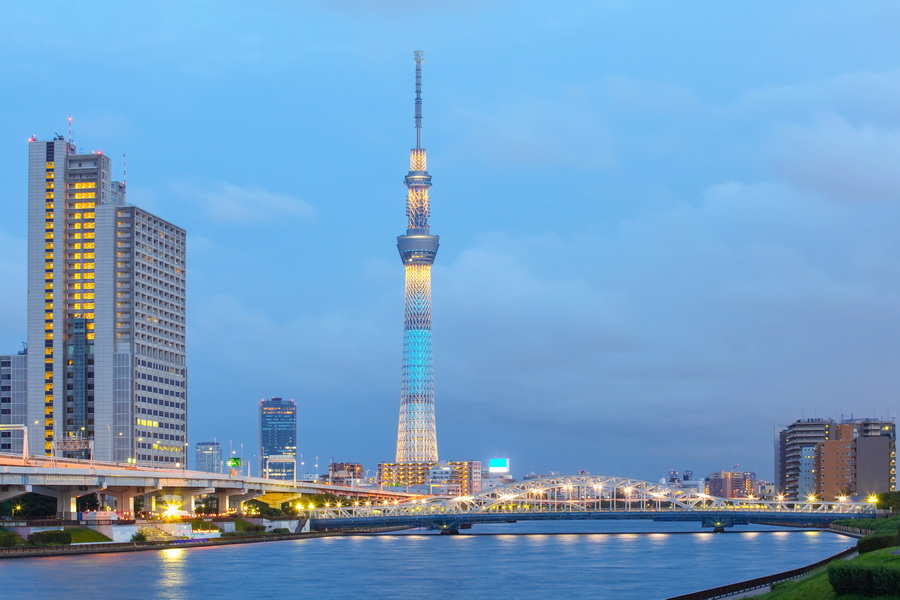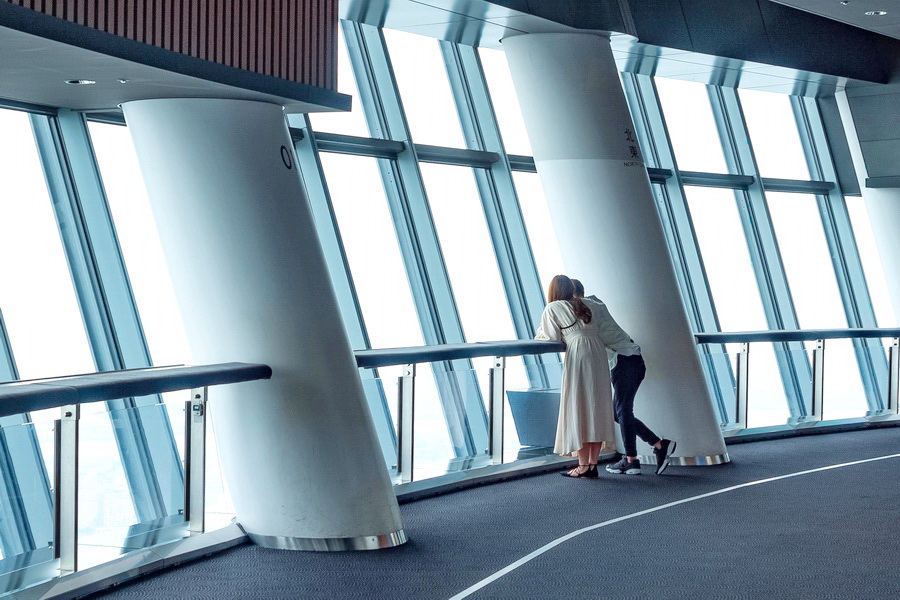
The Tokyo Skytree is one of Tokyo's most iconic landmarks. Located in the Sumida special ward, this massive edifice attracts millions of visitors from around the globe. Standing at 634 metres, the Tokyo Skytree is not just a symbol of the modern metropolis but also a famous tourist destination thanks to its unique architecture, stunning views, and various entertainment options.
History and Architecture
The Tokyo Skytree has quickly earned recognition as one of the tallest buildings in the world. With a height of 634 metres, it holds the Guinness World Record for being the highest television tower and is ranked as the third-tallest structure globally, behind the Burj Khalifa (829.8 metres) and Merdeka 118 (678.9 metres) skyscrapers. Designed by the architectural firm, Nikken Sekkei, the construction of the tower began in 2008 and was completed on February 29, 2012.
The height of 634 metres was deliberately chosen, as the pronunciation of these numbers in old Japanese sounds like "mu-sa-shi", suggesting the historical Musashi Province, which formerly spanned a large region including Tokyo, Saitama, and parts of Kanagawa Prefecture. The Tokyo Skytree's design combines traditional Japanese cultural elements with cutting-edge engineering technology. While its primary function is to facilitate digital television broadcasting in Tokyo, the tower's cultural and tourist attractions go beyond its original purpose.
The Tokyo Skytree features a distinctive cylindrical shape with smooth curves reminiscent of a Japanese sword. Its basis has a unique three-beam structure that develops into a circular shape, symbolizing the seamless integration of past and present. This design also enhances the tower's seismic and strong wind resistance, which is crucial in Japan's earthquake-prone environment.
At night, Tokyo Skytree is illuminated in three different styles:
- Iki. This style symbolizes the spirit, using light blue lights reminiscent of the Sumida River's colour.
- Miyabi. This style of lights, which represents aesthetics and beauty, shines on the tower in a golden colour and a purple hue, prevalent during the Edo era.
- Nobori. This style features a reddish-orange light, which has long been associated with good fortune and is known in Japan as the colour of tachibana (tangerine).
The Tokyo Skytree offers two observation decks that provide stunning panoramic views of Tokyo and its surroundings.
Tembo Deck
The first observation deck, Tembo Deck, is a three-story platform located 350-metres high. On clear days, the top floor offers unrivalled views of the city, including iconic landmarks such as the Tokyo Tower, the Imperial Palace, and even Mount Fuji. The middle floor has a gift shop and the Musashi Sky Restaurant, which serves a blend of French and Japanese cuisine. The lowest floor includes glass panels, offering visitors a thrilling experience of looking down at the heights under their feet.

Tembo Galleria
The second observation deck, Tembo Galleria, is located at 450 metres high and features a unique “sky corridor”, a spiral ascent through a glass gallery that gives the feeling of flying above the city. The highest point, Sorakara Point, stands at 451.2 metres, making it perfect for taking unforgettable photos that will immortalise memories for a lifetime.
Tokyo Solamachi
Tokyo Solamachi shopping and entertainment centre is located at the base of Tokyo Skytree, with over 300 stores selling a wide range of brands, as well as restaurants serving both traditional Japanese dishes and international cuisine. For art and culture enthusiasts, Solamachi offers museums and exhibition halls with regular exhibitions and events.
Sumida Aquarium
One of the most popular attractions is the Sumida Aquarium, which is located on Solomachi's fifth and sixth floors. The aquarium is home to over 10,000 marine creatures, including jellyfish, sharks, and even adorable penguins. Visitors can also explore the planetarium to learn more about the stars and space.
How to Get to the Tokyo Skytree?
The Tokyo Skytree is located in the Sumida district and is easily accessible by public transportation. The nearest railway station is Oshiage (Tokyo Skytree Station), which connects both the Hanzomon and Asakusa lines. It is just a short walk from the station to the tower, where visitors can immediately experience the vibrant atmosphere of one of Tokyo's most lively neighbourhoods.
Tips to Visit the Tokyo Skytree
Purchase the Tickets Online. Save money by booking your tickets online up to 30 days in advance. You can book anytime until 11:59 PM. the night before your visit.
Same-Day Tickets. If you prefer to purchase your tickets on the day of your visit, you may do so on the fourth floor of the Tokyo Skytree.
Opening Hours
- Monday to Saturday: 10:00 AM. - 9:00 PM.
- Sunday and holidays: 9:00 AM. - 9:00 PM.
Open every day of the year, with hours varying depending on the season.
Tips: The weekends and holidays can be very busy, so the preference will be given to weekdays for visits to avoid large crowds. Also, keep in mind that visibility from the observation decks may be limited in inclement weather, so plan your visit accordingly.
The Tokyo Skytree is more than just Japan's tallest TV tower; it is a hub for culture, history, and modern technology. When you visit, you can enjoy breathtaking views of Tokyo, try delicious Japanese cuisine, and explore many fascinating aspects of Japanese culture. The Tokyo Skytree is a must-visit for any traveller looking to experience the true essence of Japan.

